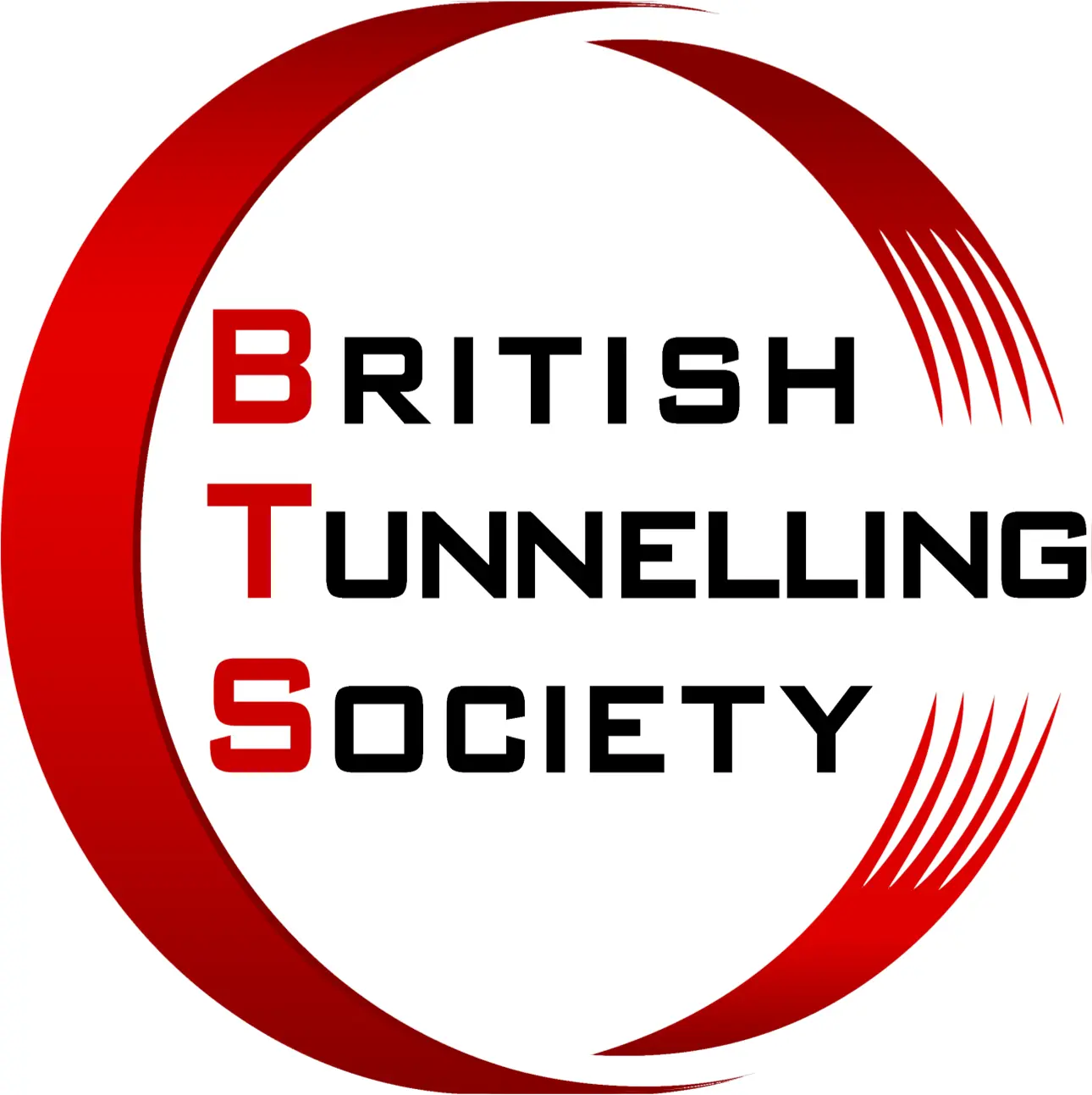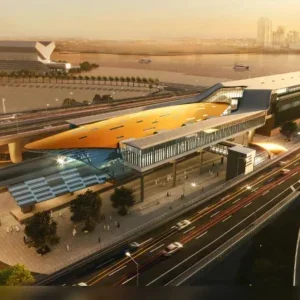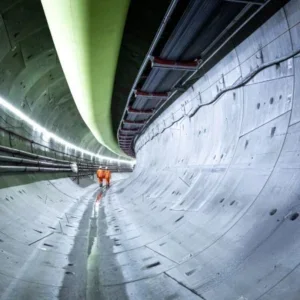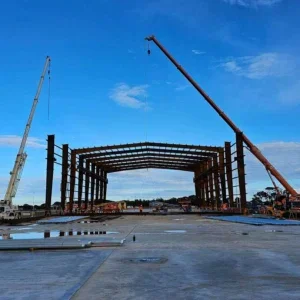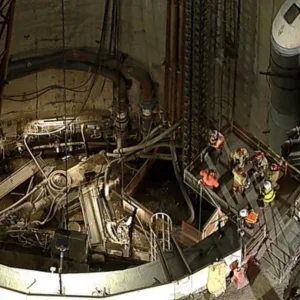The last of the 14 TBMs being used in the Phase 2 expansion of Delhi metro has just been launched on the Airport Express Link – 13 months after the first launch of a shield on another section of the fast-track tunnelling scheme.
The launch comes after a series of breakthroughs elsewhere on the scheme over recent months as excavation proceeds on the characteristic short drives of the project that involves approximately 16km of TBM drives.
In total, Phase 2 involves approximately 30km of underground works, including stations excavations.
The client, Delhi Metro Rail Corp (DMRC), said all tunnelling work is on track for completion by this December. The major expansion of the metro is strategically important to the city, not least as it is hosting the Commonwealth Games next year.
The geology facing the generally 6.2m diameter EPBMs comprises sandy silt, silty sand and gravels. Groundwater is under 2 bar or more over the invert. Cover is approximately 15m.
The 5.7m i.d. and 5.8 i.d. tunnels are lined with segmental rings (5+1) of 275mm thickness.
Four machines are now excavating the twin tubes of the Airport Express Link: a pair driving the 2.3km long section between New Delhi Railway station and Shivaji Stadium; and two TBMs – including the last to be launched on the entire project – on the 1.5km long stretch from Dwarka Sec 21 to Indira Gandhi International airport.
The contractor on the former section is a JV of Alpine, Hindustan Construction Co (HCC), Samsung. On the latter section, the contractor is a JV of Shanghai Urban Construction Group (SUCG) with Larsen & Toubro (L&T).
The majority of the tunnelling in Phase 2, however, is elsewhere – in two other corridors from Central Secretariat (CS), to Badarpur and to Qutub Minar, respectively.
The CS-Badarpur corridor has approximately 10.8km of total excavation to be executed by four TBMs.
The first breakthrough on the CS-Badarpur corridor was on 21 January, at Jawaharlal Nehru Stadium, after being launched from Jungpura last October to drive the 586m long stretch. The shield driving the parallel tube is to hole through this month.
The last pair of TBMs are currently excavating the 1,776m long Udyog Bhawan-Khan Market section and are expected to finish by August. The contractor on the CS-Badarpur corridor is a JV of Ital Thai Developments (ITD) and ITD CEM, and its contract is BC-24.
In the CS-Qutub Minar corridor there is a total of 14.3km of tunnel to be constructed using six shields. Tunnelling got underway earliest on this section of the Phase 2 works.
There are pairs of 3km and 4.16km long TBM bores to be done, respectively, in sections from Hauz Khas to Malviya Nagar and from Udyog Bhavan to Green Park (T&TI, July 2008, p7).
Tunnelling works on the Hauz Khas to Malviya Nagar section are being undertaken by Metro Tunnelling Group (MTG) – a European-Asian consortium led by Dywidag International with Shimizu, Ircon and L&T. The design and construct contract package is BC-18 and has a duration of 38 months.
The JV members had been together on Phase 1 of the metro construction in Delhi.
Excavations on the Udyog Bhavan to Green Park section of the corridor are being done by a JV of Taiwanese firm Continental Engineering Co (CEC) and local company Soma Enterprises. The design and construct contract is known as BC-16 and has a duration of 40 months.
The majority of shields on the project were manufacturered by Herrenknecht, either new (10) or were original builds previously used on Phase 1. Four of its shields are used on the Airport Express Link, four on BC-24, two on BC-18 and the remaining two on BC-16.
The project is also served by Robbins, which has an EPB design by Mitsubishi Heavy Industries (MHI) being used of two shields on BC-16. The TBMs were manufactured in Dalian, China.
Both firms have supplied other current major projects in India – Alimineti Madhava Reddy (two 10m diameter Robbins TBMs) and Subbaiah Veligonda (10m diameter Robbins and 7.9m diameter Herrenknecht).

